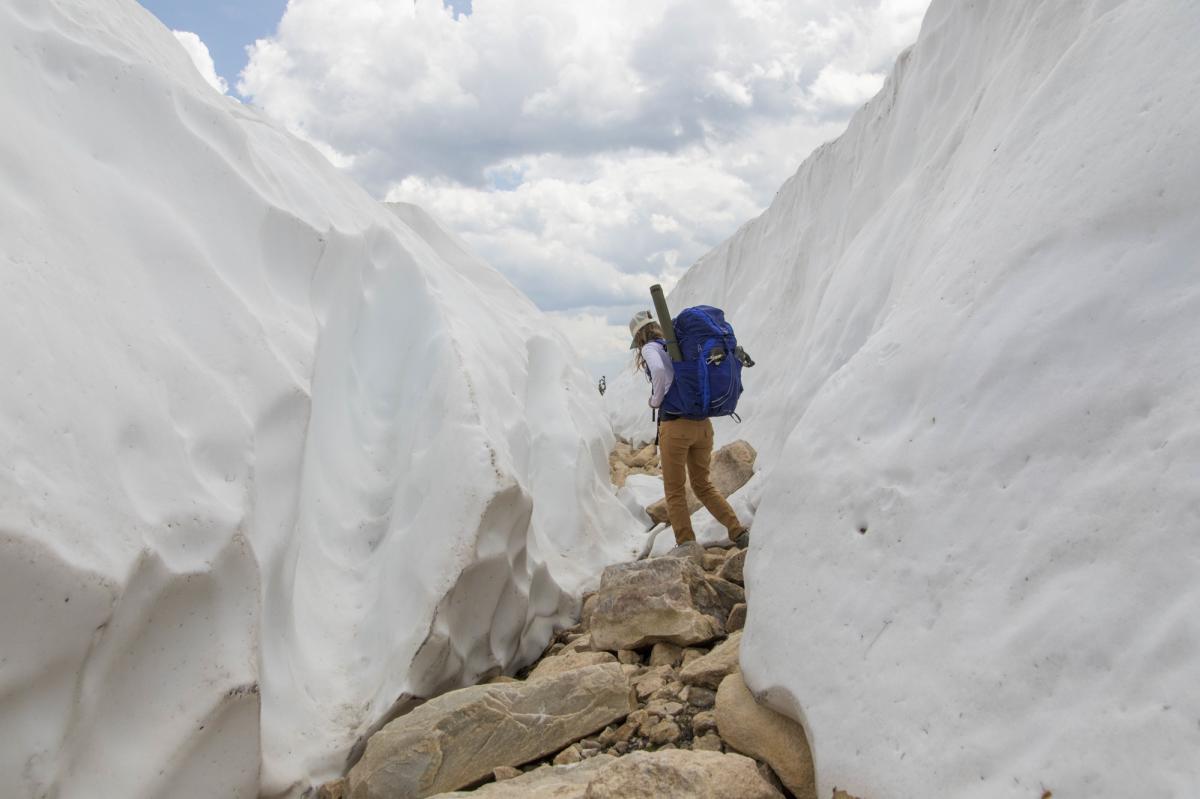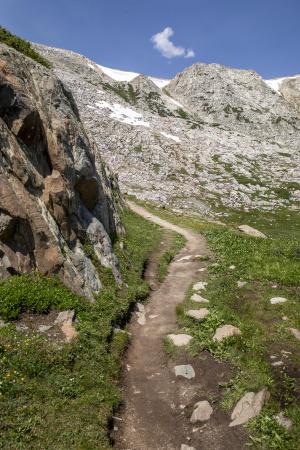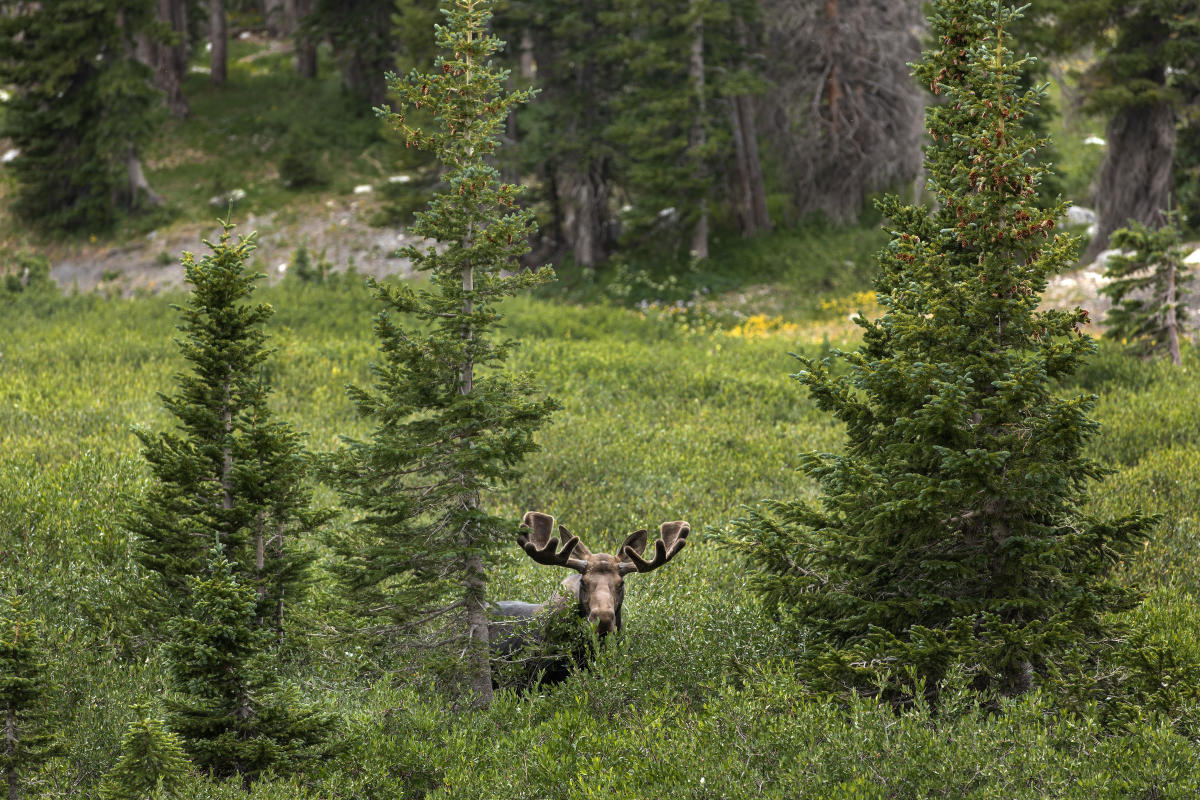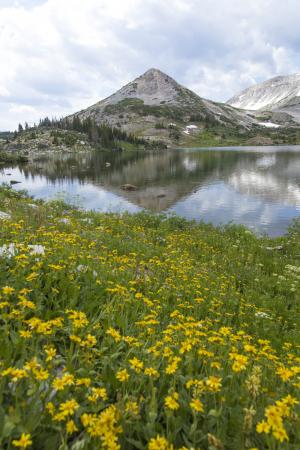Laramie is home to some of the most scenic and least-crowded hiking trails you can find in the Rocky Mountain West. The sheer quantity and quality of hiking opportunities in the area is truly amazing, encompassing the high alpine and breathtaking terrain of the Snowy Range Mountains, the gravity-defying rock formations of Vedauwoo, the dense aspen groves and conifer forests of the Happy Jack Recreation Area, and the unique mountain-meets-prairie ecosystems of Curt Gowdy State Park. Expansive meadows brimming with wildflowers, hidden waterfalls, pristine glacial lakes, and looming mountain peaks are all up for exploration.
Hiking is one of the most popular ways to enjoy Laramie’s backyard. With that in mind, it is especially important that we all educate ourselves on responsible and respectful hiking practices. Below, we offer five tips for responsible hiking in the Laramie area.

1. Prepare
Preparation is key for responsible hiking. Do your homework about the area you’re headed into. Check the weather, the trail conditions, and difficulty levels, and note any restrictions in place. Be ready to encounter all kinds of conditions as Wyoming weather can be unpredictable, particularly the higher up in elevation you go. An important part of preparation is also assessing your personal limitations as you select your route. Check in with yourself as you hike, too, and know that turning back early is more than okay. Taking these steps will ensure that search and rescue efforts are preserved for unforeseen situations and accidents—not for unprepared or brash hikers.
2. Keep to the Trail
 While it may not seem like a big deal to cut a corner or walk off the trail for a little bit here and there, the reality is that all of these actions add up. Damage to plant life can happen quickly and have lasting impacts on trail conditions and the ecosystem. Trail building is grueling work, and resources are best spent building and maintaining trails rather than repairing them. If you are hiking in a group, stay in single file if the trail is not wide enough for multiple bodies.
While it may not seem like a big deal to cut a corner or walk off the trail for a little bit here and there, the reality is that all of these actions add up. Damage to plant life can happen quickly and have lasting impacts on trail conditions and the ecosystem. Trail building is grueling work, and resources are best spent building and maintaining trails rather than repairing them. If you are hiking in a group, stay in single file if the trail is not wide enough for multiple bodies.
3. Follow Trail Etiquette
Although making sure you stick to the trail is a good start, there’s more still to learn about trail etiquette. Firstly, it’s important to know your right-of-ways. Downhill hikers should yield to uphill hikers so as not to disrupt their momentum and, if your hiking party is slower than the one behind you, step to the side to let them pass. Many hiking trails around Laramie are multipurpose, meaning you may encounter mountain bikers and, occasionally, horseback riders in addition to other hikers. Generally, bikers should yield to hikers, although sometimes it is easier for hikers to step out of the way when bikers are approaching fast. Use your best discretion in these situations. Hikers should also always yield to horses by stepping calmly and deliberately to the side rather than approaching from behind. Finally, maintain an attitude of respect for your fellow hikers by giving others space, being kind and courteous when you do interact, avoiding excessive noise, and leashing your pet in crowded areas.

4. Respect Wildlife
Wildlife sightings are not uncommon on hiking trails in the Laramie area. Moose, elk, deer, pronghorn, pika, and marmots are all possible encounters, among others, such as bears and mountain lions (rarely spotted!). To help protect this special experience and the animals, be sure to give them plenty of space. Do not harass them in any way and do not feed them. Instead, quietly witness and enjoy the gift of their presence.
5. Leave it Better Than You Found It
Your presence in the outdoors will have some impact no matter what, but establishing a mindset of leaving the area as good as you found it or, in some cases, better than you found it, will help you disturb the land as little as possible. Be sure to pack out any and all items you’ve packed in, including trash and toilet paper. Take care of solid waste properly with a pack-out system or by digging a six- to eight-inch deep cathole at least 200 feet away from water.
 As you pack out all that you’ve brought in, resist the urge to snag a natural souvenir such as an interesting rock or a bouquet of wildflowers. You may be tempted to think that your small mementos won’t have much of an impact, but consider what would happen if every visitor took things with that same justification.
As you pack out all that you’ve brought in, resist the urge to snag a natural souvenir such as an interesting rock or a bouquet of wildflowers. You may be tempted to think that your small mementos won’t have much of an impact, but consider what would happen if every visitor took things with that same justification.
If you’re like most hikers, spotting other people’s litter on the trail is always disheartening. It can be helpful to channel that frustration into action. Carry hand sanitizer and a small bag in your pack so that you can safely pick up any trash you find along the way. As it turns out, it feels pretty good to go above and beyond, to know you’re doing your part to preserve the beauty of these special hiking experiences for years to come.
Note: Brian and Dani Harrington are independent writers contracted by Visit Laramie. Views and opinions expressed here are their own and do not reflect those of the Albany County Tourism Board.



